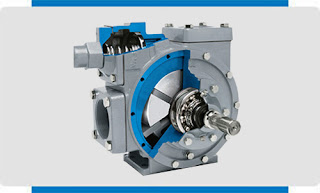A Guide to the Different Types of Industrial Pumps

A Guide to the Different Types of Industrial Pumps Industrial pumps play a role in a range of industries, facilitating the movement of diverse fluids for various purposes. They handle tasks like transferring water, managing chemicals, and dealing with thick slurries, ensuring smooth operations in different processes. Due to the nature of these tasks, there is no universal pump solution that fits all needs perfectly. Therefore, selecting the pump type tailored to your requirements is essential for optimal performance and cost efficiency. This blog will take an in-depth look at the classifications of pumps—positive displacement and dynamic pumps—discussing their functions, benefits, and ideal usage scenarios. We'll also examine IDEX Fluid Management Technologies (IDEX FMT), a supplier renowned for producing top-notch pumps recognised for their longevity and cutting-edge features. Exploring the Two Key Categories of Industrial Pumps 1. Positive displacement pumps Positive displaceme...



